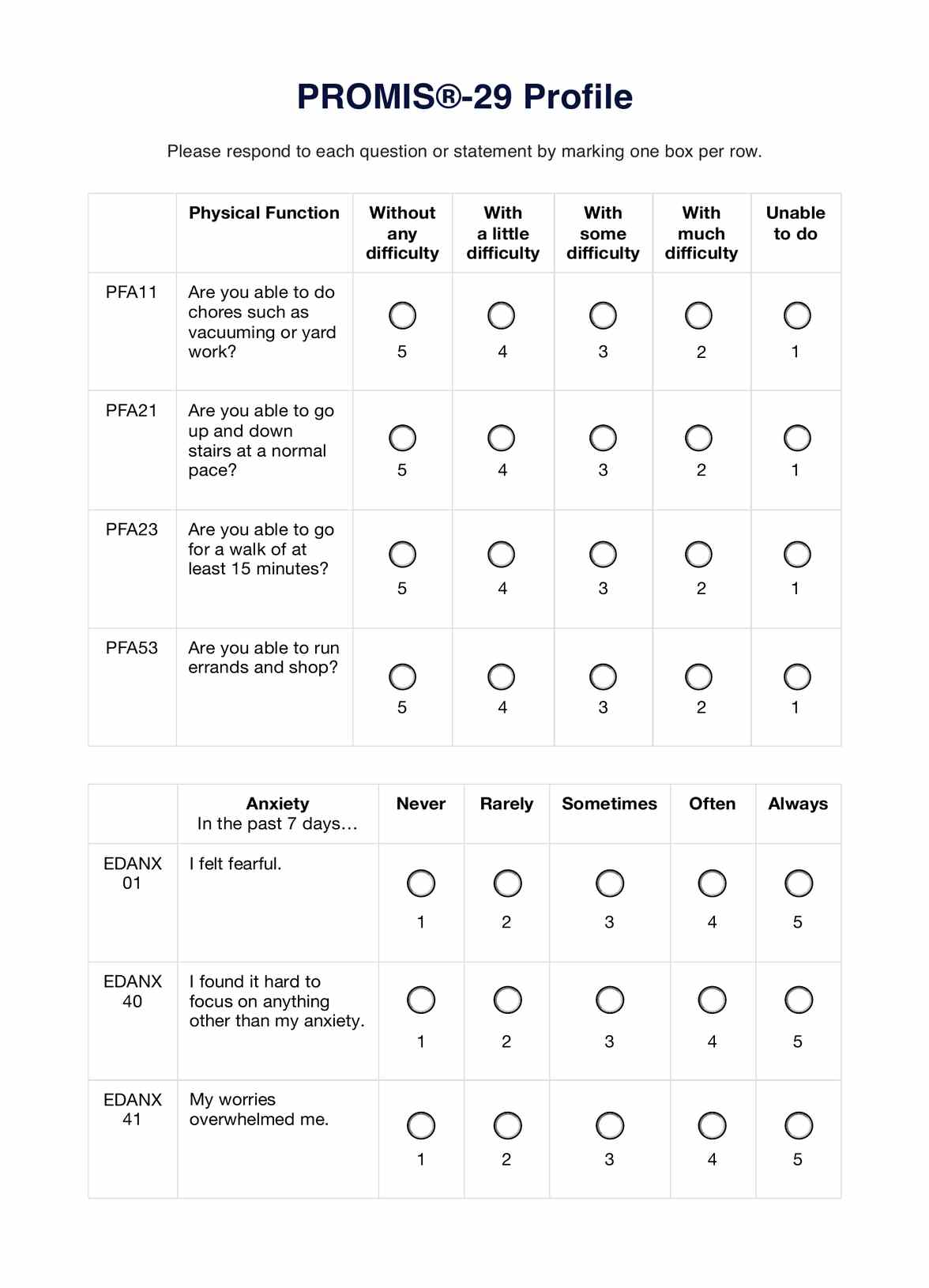PROMIS 29 typically takes 5 to 10 minutes to complete, making it a relatively quick and efficient assessment tool.

PROMIS 29
Discover PROMIS 29, a comprehensive tool for measuring patient-reported health outcomes, facilitating better healthcare decision-making.
PROMIS 29 Template
Commonly asked questions
PROMIS 29 is designed for adults aged 18 and older, with demographic characteristics making it suitable for assessing health-related quality of life and health outcomes measured in adult populations.
Other PROMIS scales include those assessing specific health domains such as depression, anxiety, physical function, pain intensity, interference with social functioning, fatigue, pain intensity, sleep disturbance, social health, and more. Additionally, there are pediatric versions of PROMIS scales for children and adolescents.
EHR and practice management software
Get started for free
*No credit card required
Free
$0/usd
Unlimited clients
Telehealth
1GB of storage
Client portal text
Automated billing and online payments











